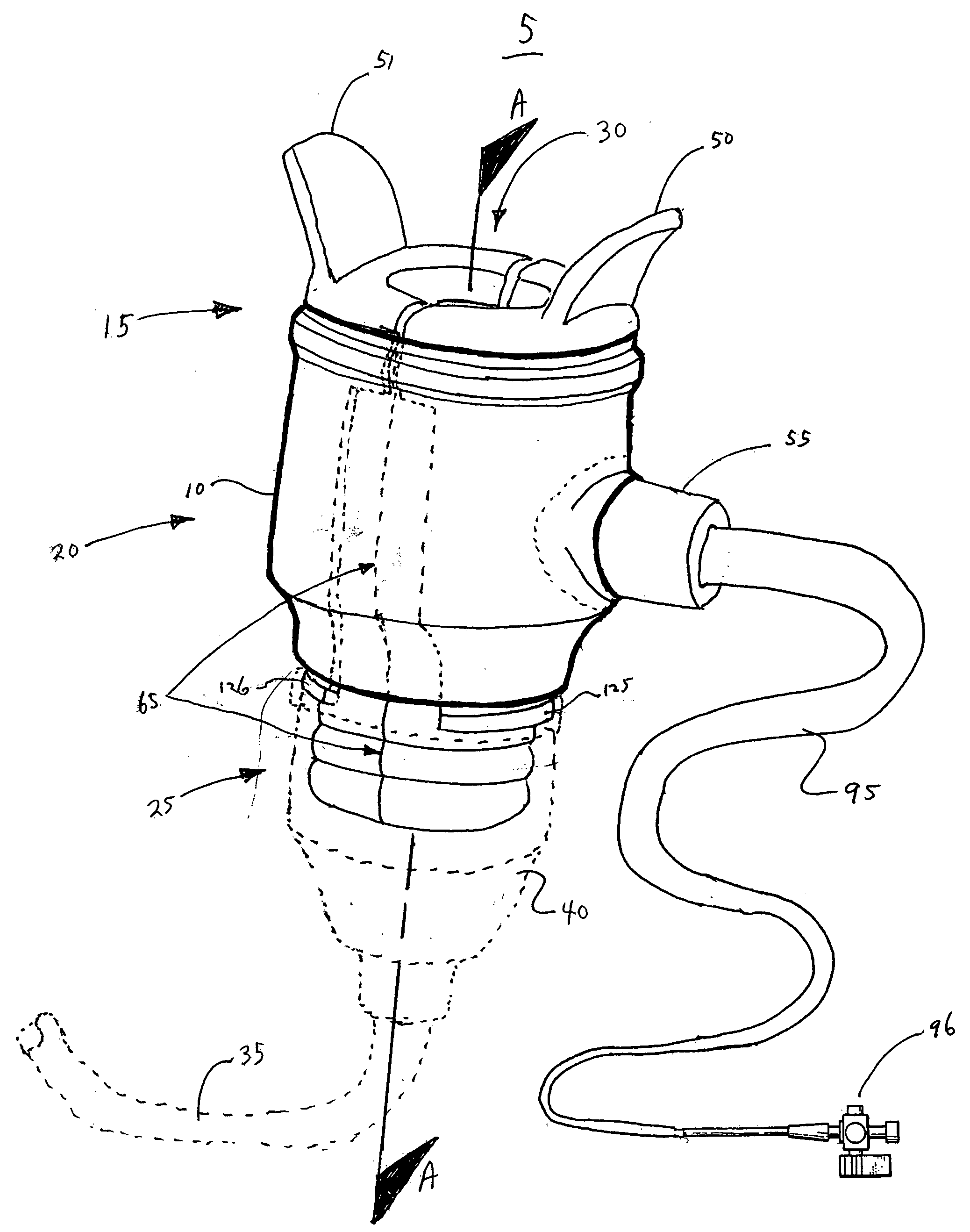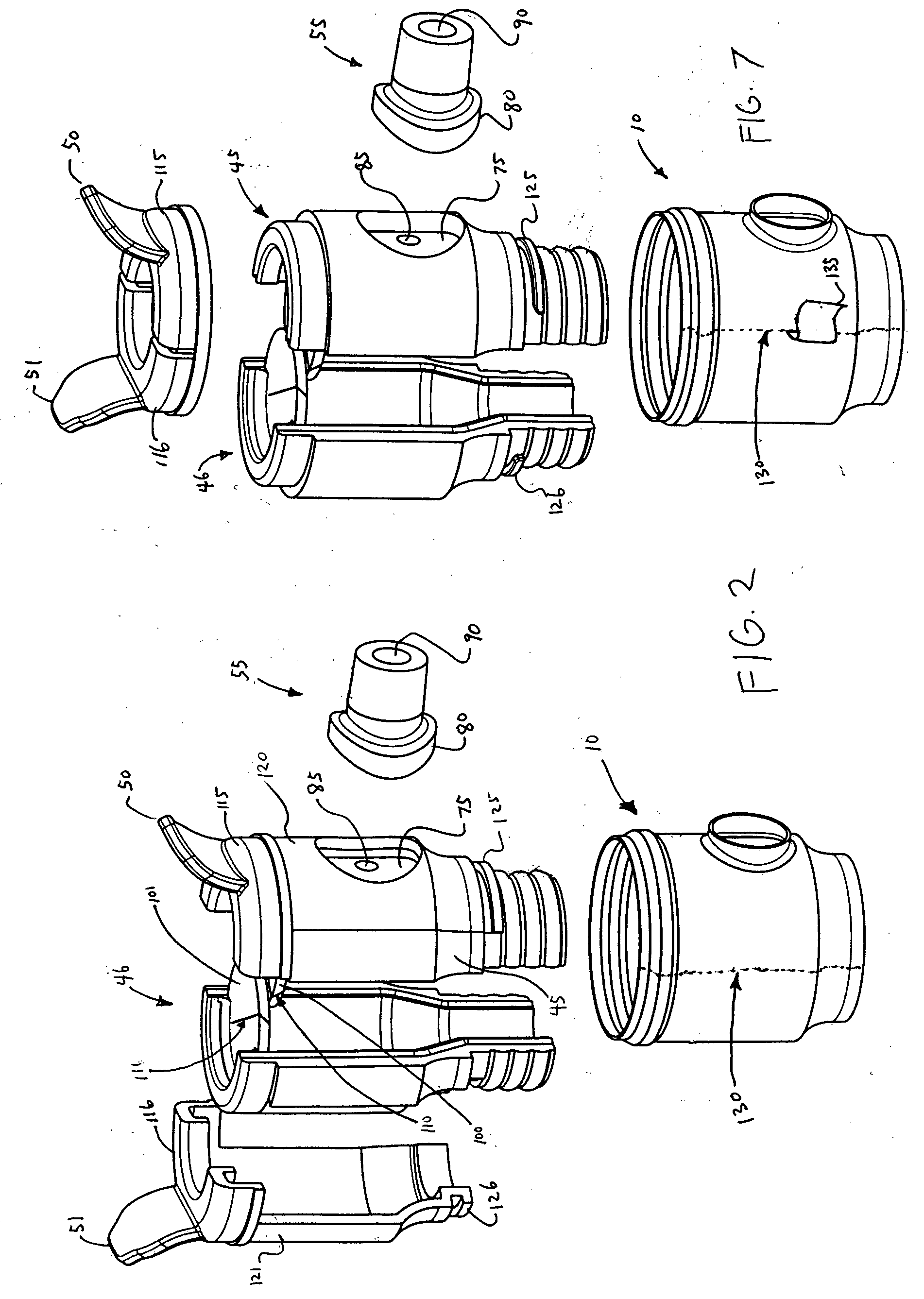Splittable hemostasis valve
a hemostasis valve and splitter technology, applied in the field of splittable hemostasis valves, can solve the problems of high manufacturing cost of prior art valves, difficult to split prior art valves, and complex mold geometry
- Summary
- Abstract
- Description
- Claims
- Application Information
AI Technical Summary
Benefits of technology
Problems solved by technology
Method used
Image
Examples
Embodiment Construction
[0031]FIG. 1 is an isometric view of one embodiment of the present invention, which is a splittable multi-piece hemostasis valve 5 that is held together in an assembled condition via a sleeve 10 formed about the assembled valve 5. In one embodiment, the sleeve 10 is a thin polymer material shrink-wrapped about the valve 5. When the valve 5 needs to be split in order to clear a device (e.g., a pacemaker lead or other medical device), the sleeve 10 is split and the valve 5 is disassembled.
[0032] The valve 5 is advantageous for multiple reasons. First, because the valve 5 is assembled from multiple pieces and then shrink-wrapped together, it offers reduced manufacturing costs as compared to prior art splittable hemostasis valves. Second, the valve requires less effort to split than prior art splittable hemostasis valves.
[0033] As shown in FIG. 1, the valve 5 includes an entry end 15, a generally cylindrical body portion 20, and an attachment end 25. The entry end 15 has an opening 30...
PUM
| Property | Measurement | Unit |
|---|---|---|
| angle | aaaaa | aaaaa |
| flexible | aaaaa | aaaaa |
| lengths | aaaaa | aaaaa |
Abstract
Description
Claims
Application Information
 Login to View More
Login to View More - R&D
- Intellectual Property
- Life Sciences
- Materials
- Tech Scout
- Unparalleled Data Quality
- Higher Quality Content
- 60% Fewer Hallucinations
Browse by: Latest US Patents, China's latest patents, Technical Efficacy Thesaurus, Application Domain, Technology Topic, Popular Technical Reports.
© 2025 PatSnap. All rights reserved.Legal|Privacy policy|Modern Slavery Act Transparency Statement|Sitemap|About US| Contact US: help@patsnap.com



